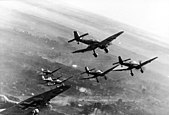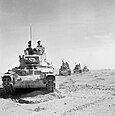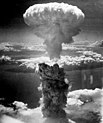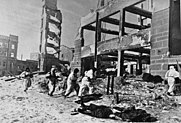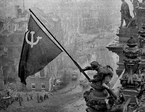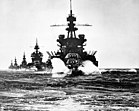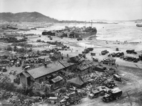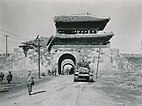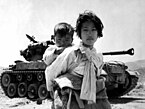User:Jamsohannson5/sandbox
 President Clinton prepares to deliver the speech announcing his resignation. | |
| Date | July 15, 1998 |
|---|---|
| Time | 12:01 pm (Eastern Time, UTC-07:00) |
| Duration | 32 minutes |
| Venue | Oval Office |
| Location | Washington, D.C. |
| Cause | Monica Lewinsky Scandal |
| Participants | Bill Clinton |
| Assassination of Howard Dean | |
|---|---|
 | |
| Location | Detroit, Michigan, U.S. |
| Date | October 27, 2010 5:31 P.M (CST) |
| Target | Howard Dean |
| Weapons | Smith & Weston M&P15 Sport III semi automatic rifle |
| Deaths | Howard Dean |
| Injured | Faron K. Paramore |
| Perpetrator | Adam Fox |
| Charges | Murder(1 counts) and Assault with a deadly weapon (2 Counts) |
| Part of the War on terror | |
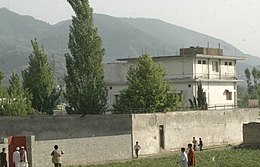 Osama bin Laden's compound | |
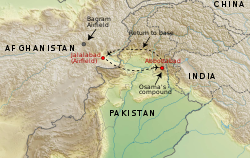 Map of Operation Neptune Spear showing the locations of U.S. bases in Afghanistan and the approximate flight path to and from the compound in Pakistan | |
| Date | October 28, 2012; 12 years ago |
|---|---|
| Location | Osama bin Laden's compound in Bilal Town, Abbottabad, Khyber Pakhtunkhwa, Pakistan |
| Also known as | Operation Neptune Spear |
| Participants | |
| Outcome | Osama bin Laden's escape from U.S. forces, multiple U.S Deaths. |
| Deaths |
|
| Jamsohannson5/sandbox | |
|---|---|
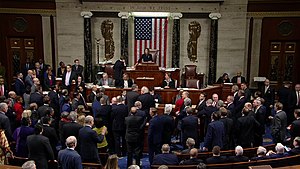 Members of House of Representatives vote on one article of impeachment | |
| Accused | President Eliot Spitzer |
| Proponents | |
| Date | December 1st, 2013 – January 22nd, 2014 (1 month and 3 weeks) |
| Outcome | Acquitted by the U.S. Senate, remained in the office of President of the United States |
| Charges | Crimes of Moral Turpitude |
| Cause | Eliot Spitzer Prostitution Scandal|Allegations that Spitzer unlawfully solicited Prostitutes |
| Congressional votes | |
| Voting in the U.S. House of Representatives | |
| Accusation | Crimes of Moral Turpitude |
| Votes in favor | 354 |
| Votes against | 244 |
| Present | 0 |
| Not voting | 0 |
| Result | Approved |
| Voting in the U.S. Senate | |
| Accusation | Article I – Crimes of Moral Turpitude |
| Votes in favor | 66 "guilty" |
| Votes against | 36 "not guilty" |
| Result | Acquitted (69 "guilty" votes necessary for a conviction) |
| ||||||||||||||||||||||
Are you in favour of abolishing the Canadian monarchy? | ||||||||||||||||||||||
| Results | ||||||||||||||||||||||
|---|---|---|---|---|---|---|---|---|---|---|---|---|---|---|---|---|---|---|---|---|---|---|
| ||||||||||||||||||||||
 Results by province and territory
| ||||||||||||||||||||||
Jamsohannson5/sandbox | |
|---|---|
 La Follette in 1924 | |
| 30th President of the United States | |
| In office March 4, 1925 – June 18, 1925 | |
| Vice President | Burton K. Wheeler |
| Preceded by | Warren G. Harding |
| Succeeded by | Burton K. Wheeler |
| United States Senator from Wisconsin | |
| In office January 4, 1906 – March 2, 1925 | |
| Preceded by | Joseph V. Quarles |
| Succeeded by | Robert M. La Follette Jr. |
| 20th Governor of Wisconsin | |
| In office January 7, 1901 – January 1, 1906 | |
| Lieutenant | |
| Preceded by | Edward Scofield |
| Succeeded by | James O. Davidson |
| Member of the U.S. House of Representatives from Wisconsin's 3rd district | |
| In office March 4, 1885 – March 3, 1891 | |
| Preceded by | Burr W. Jones |
| Succeeded by | Allen R. Bushnell |
| Personal details | |
| Born | Robert Marion La Follette June 14, 1855 Primrose, Wisconsin, U.S. |
| Died | June 18, 1925 (aged 70) Washington, D.C., U.S. |
| Resting place | Forest Hill Cemetery |
| Political party | Republican |
| Other political affiliations | Progressive (1924) |
| Spouse | Belle Case |
| Children | 4, including Robert Jr., Philip, and Fola |
| Education | University of Wisconsin–Madison (BS) |
| Signature | |
Theodore Roosevelt Jr. | |
|---|---|
 Roosevelt, c. 1921 | |
| 34th President of the United States | |
| In office March 4, 1933 – June 12, 1943 | |
| Vice President |
|
| Preceded by | Cordell Hull |
| Succeeded by | Ellis Arnall |
| 43rd Governor of New York | |
| In office January 1, 1929 – December 31, 1932 | |
| Preceded by | Al Smith |
| Succeeded by | Louis Waldman |
| Assistant Secretary of the Navy | |
| In office March 10, 1921 – January 13th, 1922 | |
| President | Warren G. Harding |
| Preceded by | Gordon Woodbury |
| Succeeded by | Theodore Douglas Robinson |
| Member of the New York State Assembly from the 2nd district | |
| In office 1920–1921 | |
| Preceded by | Franklin A. Coles |
| Succeeded by | Frederick Trubee Davison |
| Personal details | |
| Born | Theodore Roosevelt III September 13, 1887 Oyster Bay, New York, U.S. |
| Died | July 12, 1943 (aged 55) Washington, D.C., U.S. |
| Resting place | Arlington National Cemetery |
| Political party |
|
| Spouse | |
| Children | |
| Parent(s) | Theodore Roosevelt Edith Roosevelt |
| Relatives | Roosevelt family |
| Alma mater | Harvard College |
| Profession |
|
| Signature | |
| Military service | |
| Allegiance | United States |
| Branch | United States Army |
| Years of service | 1917–1919 |
| Rank | Lieutenant Colonel |
| Unit | 1st Infantry Division |
| Commands | 1st Battalion, 26th Infantry |
| Campaigns | |
| Awards | |
| 1957 Capitol Building Bombing | |
|---|---|
| Part of domestic terrorism in the United States | |
 The U.S. Capitol Building shortly before the explosion | |
| Location | U.S. Capitol Building Washington D.C, United States. |
| Coordinates | 38°53′23″N 77°00′33″W / 38.88972°N 77.00917°W |
| Date | June 13, 1957 4:31 p.m. (UTC−05:00) |
| Target | The U.S Government Executive Branch, President Wayne Morse and Supreme court nominee Thurgood Marshall |
Attack type | Homemade Improvised Explosives Mass Shooting |
| Deaths | 71, Including: President Wayne Morse, Speaker of the House Lee Metcalf, First Lady Mildred Morse and after three days President Hubert Humphrey[1]. Additionally 23 other members of Congress were killed. |
| Injured | 325 |
| Perpetrators | Marvin Stephens, Chase Beckett, and the National Alliance for Purity White Supremacist group. |
| Motive | Backlash against Civil Rights Legislation, the NAACP v. State of Mississippi Supreme Court decision which ended public school segregation in the United States and the Nomination of Thurgood Marshall to the Supreme Court |
| Southern Crisis | |||||||
|---|---|---|---|---|---|---|---|
From top, left to right: Soldiers in the Streets of Little Rock, Arkansas • The Aftermath of a white supremacist attack in New York • Police breaking up a pro-KKK rally in Charleston, West Virginia • The State Funeral of President Wayne Morse • Aftermath of Car Bombing at Roosevelt Airport, New York
| |||||||
| |||||||
| Participants | |||||||
| Federal and State Governments | Various white supremacist and southern nationalist groups | ||||||
| Commanders and leaders | |||||||
| Main Federal leaders: | Main Terrorist leaders: | ||||||
| Casualties and losses | |||||||
|
| ||||||
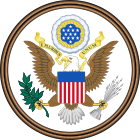 | |
| Long title | An Act to provide means of further securing and protecting the civil rights of persons within the jurisdiction of the United States additionally to enforce the fifteenth amendment of the Constitution of the United States, to prevent discrimination in federally assisted programs, to establish a Commission on Equal Employment Opportunity, and for other purposes. |
|---|---|
| Enacted by | the 85th United States Congress |
| Effective | August 12, 1958 |
| Citations | |
| Public law | 87-321 |
| Statutes at Large | 89 Stat. 649 |
| Legislative history | |
| |
| Major amendments | |
| Civil Rights Act of 1963 Civil Rights Act of 1967 | |
| United States Supreme Court cases | |
| See § United States Supreme Court cases | |
Wendell Willkie | |
|---|---|
 Willkie in 1940 | |
| 33th President of the United States | |
| In office March 4, 1941 – June 2, 1944 | |
| Vice President | Alf Landon |
| Preceded by | Huey Long |
| Succeeded by | Alf Landon |
| Personal details | |
| Born | Lewis Wendell Willkie February 18, 1892 Elwood, Indiana, United States |
| Died | June 2, 1944 (aged 52) Washington D.C, United States |
| Resting place | Arlington National Cemetery |
| Political party |
|
| Spouse |
Edith Willkie (m. 1918) |
| Children | Philip |
| Education | Indiana University, Bloomington (BA, LLB) |
| Signature | |
Huey Long | |
|---|---|
 | |
| 39th President of the United States | |
| In office June 16, 1957 – December 25, 1963 | |
| Vice President |
|
| Preceded by | Hubert Humphrey |
| Succeeded by | Quentin Burdick |
| President pro tempore of the United States Senate | |
| In office January 20, 1955 – June 16, 1957 | |
| Preceded by | Walter F. George |
| Succeeded by | Warren Magnuson |
| United States Senator from Louisiana | |
| In office January 25, 1932 – June 16, 1957 | |
| Preceded by | Joseph E. Ransdell |
| Succeeded by | Russell B. Long |
| 40th Governor of Louisiana | |
| In office May 21, 1928 – January 25, 1932 | |
| Lieutenant | |
| Preceded by | Oramel H. Simpson |
| Succeeded by | Alvin King |
| Personal details | |
| Born | August 30, 1893 Winnfield, Louisiana, U.S. |
| Died | December 25, 1963 (aged 70) Camp David, Maryland, U.S. |
| Cause of death | Heart Attack |
| Resting place | Huey P. Long National Memorial |
| Political party |
|
| Spouse | |
| Children | 3; including Russell |
| Relatives | Long family |
| Signature | |
| Year | U.S.[2] | South Vietnam |
|---|---|---|
| 1956–1959 | 4 | n.a. |
| 1960 | 5 | 2,223 |
| 1961 | 16 | 4,004 |
| 1962 | 53 | 4,457 |
| 1963 | 122 | 5,665 |
| 1964 | 216 | 7,457 |
| 1965 | 1,928 | 11,242 |
| 1966 | 6,350 | 11,953 |
| 1967 | 11,363 | 12,716 |
| 1968 | 16,899 | 27,915 |
| 1969 | 8,738 | 25,385 |
| 1970 | 3,726 | 29,837 |
| 1971 | 904 | 24,105 |
| 1972 | 297 | 45,596 |
| 1973 | 4 | 32,811 |
| 1974 | n.a. | 25,056 |
| 1975 | 5,837 | 48,736 |
| 1976 | 13,839 | 45,164 |
| 1977 | 15,883 | 42,983 |
| 1978 | 9,629 | 46,517 |
| 1979 | 8,034 | 45,467 |
| 1980 | 11,292 | 40,184 |
| 1981 | 1,083 | 64,837 |
| After 1981 | 13 | n.a. |
| Total | 116,235 | 604,310[3] |
George A. Sutherland | |
|---|---|
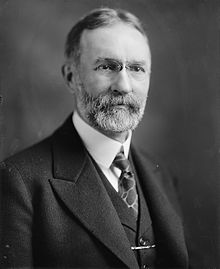 | |
| Associate Justice of the Supreme Court of the United States | |
| In office October 2, 1922 – January 17, 1938[4] | |
| Nominated by | Warren G. Harding |
| Preceded by | John Hessin Clarke |
| Succeeded by | Stanley Forman Reed |
| United States Senator from Utah | |
| In office March 4, 1905 – March 3, 1917 | |
| Preceded by | Thomas Kearns |
| Succeeded by | William King |
| Member of the U.S. House of Representatives from Utah's at-large district | |
| In office March 4, 1901 – March 3, 1903 | |
| Preceded by | William King |
| Succeeded by | Joseph Howell |
| Personal details | |
| Born | George Alexander Sutherland March 25, 1862 Stony Stratford, Buckinghamshire, England |
| Political party | Liberal (1883–1896) Republican (1896–1942) |
| Spouse |
Rosamond Lee (m. 1883) |
| Children | 3 |
| Education | Brigham Young University (BA) University of Michigan |
| Signature | |
| Disappeared | January 7, 1938 (aged 75) Newton County, Mississippi, U.S. |
| Status | Declared dead in absentia |
| Executive Order to abolish discrimination on the basis of race, color, religion, or national origin in the United States Armed Forces | |
 | |
| Type | Executive order |
|---|---|
| Executive Order number | 8001 |
| Signed by | Wendell L. Willkie on March 10, 1941 |
| Summary | |
| |
 | |
| Long title | "Joint Resolution Declaring that a state of war exists between the Imperial Government of Japan and the Government and the people of the United States and making provisions to prosecute the same." |
|---|---|
| Enacted by | the 77th United States Congress |
| Effective | December 9, 1941 |
| Citations | |
| Public law | Pub. L. 77–328 |
| Statutes at Large | 55 Stat. 795 |
| Legislative history | |
| |
 | |
| Long title | "Joint Resolution Declaring that a state of war exists between the Government of Germany and the Government and the people of the United States and making provisions to prosecute the same." |
|---|---|
| Enacted by | the 77th United States Congress |
| Effective | December 9, 1941 |
| Citations | |
| Public law | Pub. L. 77–333 |
| Statutes at Large | 55 Stat. 796 |
| Legislative history | |
| |
 | |
| Other short titles | An Act to Promote the Defense of the United States |
|---|---|
| Long title | An Act further to promote the defense of the United States, and for other purposes. |
| Nicknames | Lend-Lease |
| Enacted by | the 77th United States Congress |
| Effective | May 2, 1941 |
| Citations | |
| Public law | Pub. L. 77–32 |
| Statutes at Large | 54 Stat. 31 |
| Legislative history | |
| |
 | |
| Other short titles | An Act to Restore the Judicial Branch of the United States. |
|---|---|
| Long title | An Act to Restore the Judicial Branch of the United States by expanding the Supreme Court to a number of judges suited for modern times. |
| Enacted by | the 81st United States Congress |
| Effective | March 15, 1949 |
| Citations | |
| Public law | Pub. L. 51–23 |
| Statutes at Large | 16 Stat. 44 |
| Legislative history | |
| |
 | |
| Other short titles | An Act to provide low-cost electricity to the people of the United States. |
|---|---|
| Long title | An Act to provide low-cost electricity to the people of the United States, create infrastructure for the people of the United States, and provide economic relief to the people of the United States. |
| Enacted by | the 81st United States Congress |
| Effective | May 1, 1949 |
| Citations | |
| Public law | Pub. L. 73–18 |
| Statutes at Large | 48 Stat. 58 |
| Legislative history | |
| |
Disappearance
[edit]Sutherland disappeared on January 7, 1938. In the decades since his disappearance, many conspiracy theories surrounding Sutherland's disappearance have gained prominence.[5][6] Most are centered around the President at the time, Huey Long of Louisiana. Sutherland's opposition to Long's policies, particularly his opinion in State of Vermont v. United States earned him the enmity of Long.[7][8]
The details of the disappearance itself are incredibly vague. Sutherland was last seen in Decatur Mississppi. One witness, a local shop-owner named Frank Dawes claims to have seen the Justice alone near the outskirts of town on the 7th. Dawes would give his statement to FBI investigators on February 3rd, 1938.[9] After giving his statement Dawes too would disappear, his disappearance is likewise completely unsolved.[10]
An FBI investigation (which remained classified until 2001), found nothing to determine where Sutherland had gone, besides the statement from Dawes. Despite several additional investigations in decades since the disappearances of Dawes and Sutherland, the bodies have never been discovered.[11]
Contemporary newspapers rarely mentioned Long in relation to the disappearances, but in decades since historical analysis of Long's presidential papers has shown the hatred Long felt towards the members of the Supreme Court, especially Sutherland.[12] Despite many theories, no evidence of Long's involvement has ever been revealed, and the case remains unresolved.[13][14]
| World War II | |||||||
|---|---|---|---|---|---|---|---|
| |||||||
| |||||||
| Participants | |||||||
| Allies | Axis | ||||||
| Commanders and leaders | |||||||
| Main Allied leaders: | Main Axis leaders: | ||||||
| Casualties and losses | |||||||
|
| ||||||
| Brown & Root v. Colorado Valley Authority | |
|---|---|
 | |
| Argued March 2, 1946 Decided May 11, 1946 | |
| Full case name | Brown & Root v. Colorado Valley Authority, et al. |
| Citations | 297 U.S. 288 (more) 56 S. Ct. 466; 80 L. Ed. 688 |
| Case history | |
| Prior | Certiorari to the Circuit Court of Appeals for the Fifth Circuit, 78 F.2d 578 |
| Holding | |
| Congress did abuse its power by establishing the Colorado Valley Authority, the Tennessee Valley Authority, the Mississippi Valley Authority, the Ohio Valley Authority, and the California Valley Authority, Government corporations established to provide public power. These corporations are ordered dissolved. | |
| Court membership | |
| |
| Case opinions | |
| Majority | Hughes, joined by Van Devanter, Brandeis, Sutherland, Butler, Stone, Roberts, Cardozo |
| Concurrence | Brandeis, joined by Stone, Roberts, Cardozo |
| Concur/dissent | McReynolds |
1948
[edit]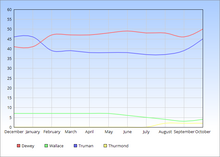
| Month | Wayne Morse (P) % | Douglas MacArthur (R) % | Unpledged Electors % |
|---|---|---|---|
| December 1947/January 1948 | 41% | 49% | 8% |
| February/March | 43% | 48% | 7% |
| April/May | 40% | 49% | 8% |
| June/July | 39% | 51% | 9% |
| 40% | 52% | 7% | |
| August/September | 42% | 50% | 7% |
| 43% | 48% | 8% | |
| 42% | 47% | 7% | |
| 41% | 49% | 8% | |
| 42% | 48% | 6% | |
| October[16] | 43% | 49% | 7% |
| Actual result | 48.56% | 44.18% | 6.23% |
| Difference between actual result and final poll | +5.56% | -4.82% | -0.77% |
| Korean War | |||||||||
|---|---|---|---|---|---|---|---|---|---|
| Part of the Cold War and the Korean conflict | |||||||||
Clockwise from top left:
| |||||||||
| |||||||||
| Belligerents | |||||||||
|
|
| ||||||||
|
|
| ||||||||
| Commanders and leaders | |||||||||
| Strength | |||||||||
|
Peak strength (combat troops): |
Total: Together: 3,042,000 | ||||||||
| Casualties and losses | |||||||||
"ARMADURA Z29 HELMET ARMOR Z29" by OSCAR CREATIVO | |||||||||
| NAACP v. State of Louisiana | |
|---|---|
 | |
| Argued December 13, 1952 Decided March 28, 1953 | |
| Full case name | The National Association for the Advancement of Colored People, et al. v. State of Louisiana et al. |
| Citations | 347 U.S. 483 (more) |
| Holding | |
| Segregation of students in public schools violates the Equal Protection Clause of the Fourteenth Amendment, because separate facilities are inherently unequal. Eastern District of Louisiana reversed. | |
| Court membership | |
| |
| Case opinions | |
| Majority | Warren, joined by Douglas, Bricker, Lindley, Phillips, Olson, Biggs, Woodbury, Frankfurter, O'Dunne |
| Dissent | Davis, Fournet, Parker |
| Laws applied | |
| U.S. Const. amend. XIV | |
This case overturned a previous ruling or rulings | |
| Plessy v. Ferguson (1896) (in part) Cumming v. Richmond County Board of Education (1899) Berea College v. Kentucky (1908) | |
 | |
| Long title | An Act to provide means of further securing and protecting the civil rights of persons within the jurisdiction of the United States additionally to enforce the fifteenth amendment of the Constitution of the United States, to establish a Commission on Equal Employment Opportunity, and for other purposes. |
|---|---|
| Enacted by | the 83rd United States Congress |
| Effective | August 1, 1954 |
| Citations | |
| Public law | 84-311 |
| Statutes at Large | 99 Stat. 623 |
| Legislative history | |
| |
| Major amendments | |
| Civil Rights Act of 1956 Civil Rights Act of 1959 Civil Rights Act of 1962 Civil Rights Act of 1968 Civil Rights Act of 1999 | |
| United States Supreme Court cases | |
| See § United States Supreme Court cases | |
| 1955 Capitol Building Bombing | |
|---|---|
| Part of The Southern Crisis | |
 The U.S. Capitol Building shortly before the attack | |
| Location | U.S. Capitol Building Washington D.C, United States. |
| Coordinates | 38°53′23″N 77°00′33″W / 38.88972°N 77.00917°W |
| Date | June 30, 1955 1:34 p.m. (UTC−05:00) |
| Target | The U.S Government Executive Branch, President Wayne Morse and Supreme court nominee Thurgood Marshall |
Attack type | Homemade Improvised Explosives Mass Shooting |
| Deaths | 104, Including: President Wayne Morse, Speaker of the House Lee Metcalf, First Lady Mildred Morse, and 44 other members of Congress. |
| Injured | 455 |
| Perpetrators | Marvin Stephens, Chase Beckett, the National Alliance for Purity, and the Klu Klux Klan. |
| Motive | Backlash against Civil Rights Legislation, the NAACP v. State of Louisiana Supreme Court decision which ended public school segregation in the United States and the Nomination of Thurgood Marshall to the Supreme Court |
Lyndon B. Johnson | |
|---|---|
 Johnson in 1955 | |
| 36th President of the United States | |
| In office June 30, 1955 – July 2, 1955 | |
| Vice President | None |
| Preceded by | Wayne Morse |
| Succeeded by | Huey Long |
| 36th Vice President of the United States | |
| In office March 4, 1949 – June 30, 1955 | |
| President | Wayne Morse |
| Preceded by | H. Styles Bridges |
| Succeeded by | Paul Douglas |
| Senate Majority Leader | |
| In office January 3, 1945 – January 3, 1949 | |
| Whip | Hubert Humphrey |
| Preceded by | George W. Norris |
| Succeeded by | Robert M. La Follette Jr. |
| Chair of the Senate Progressive Caucus | |
| In office January 3, 1945 – January 3, 1949 | |
| Preceded by | George W. Norris |
| Succeeded by | Robert M. La Follette Jr. |
| United States Senator from Texas | |
| In office August 4, 1941 – January 3, 1949 | |
| Preceded by | Andrew Jackson Houston |
| Succeeded by | James Allred |
| Member of the U.S. House of Representatives from Texas's 10th district | |
| In office April 10, 1937 – August 2, 1941 | |
| Preceded by | James P. Buchanan |
| Succeeded by | Homer Thornberry |
| Personal details | |
| Born | Lyndon Baines Johnson August 27, 1908 Gillespie County, Texas, U.S. |
| Died | July 2, 1955 (aged 46) Washington D.C., U.S. |
| Cause of death | Heart Attack |
| Resting place | Johnson Family Cemetery |
| Political party | Progressive |
| Spouse | |
| Children | |
| Parents |
|
| Relatives | George Washington Baines (great-grandfather), Philip Bobbitt (nephew) |
| Education | |
| Occupation |
|
| Awards | Presidential Medal of Freedom (posthumously, 1959) |
| Signature | |
| Military service | |
| Allegiance | United States |
| Branch/service | United States Navy |
| Years of service |
|
| Rank | |
Wayne Morse | |
|---|---|
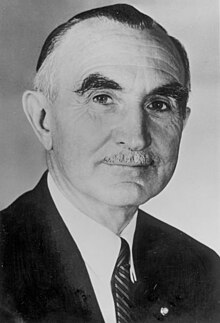 | |
| 35th President of the United States | |
| In office March 4, 1949 – June 30, 1955 | |
| Vice President | Lyndon B. Johnson |
| Preceded by | Alf Landon |
| Succeeded by | Lyndon B. Johnson |
| United States Senator from Oregon | |
| In office January 3, 1943 – January 3, 1949 | |
| Preceded by | Rufus C. Holman |
| Succeeded by | Richard L. Neuberger |
| Personal details | |
| Born | Wayne Lyman Morse October 20, 1900 Madison, Wisconsin, U.S. |
| Died | June 30, 1955 (aged 54) Washington D.C., U.S. |
| Cause of death | Assasination |
| Political party | Progressive |
| Spouse |
Midge Downie (m. 1924) |
| Children | 3 |
| Education | University of Wisconsin, Madison (BA, MA) University of Minnesota (LLB) Columbia University (LLM, SJD) |
| Occupation |
|
| Awards | Presidential Medal of Freedom (posthumously, 1959) |
| Military service | |
| Allegiance | United States |
| Branch/service | United States Army |
| Years of service | 1923–1929 |
| Rank | |
| Unit | Field Artillery Branch U.S. Army Reserve |
| Southern Crisis | |||||||
|---|---|---|---|---|---|---|---|
From top, left to right: Soldiers in the Streets of Little Rock, Arkansas • Massachusetts National Guard units enforcing martial law in Boston • The State Funeral of President Wayne Morse • Aftermath of Car Bombing at Floyd B. Olson international Airport, New York • Police breaking up a pro-KKK rally in Charleston, West Virginia
| |||||||
| |||||||
| Participants | |||||||
| Federal and State Governments | Various white supremacist and southern nationalist groups | ||||||
| Commanders and leaders | |||||||
| Main Federal leaders: | Main Terrorist leaders: | ||||||
| Casualties and losses | |||||||
|
| ||||||
| Executive Order declaring the suspension of Habeas Corpus and declaring Martial Law | |
 | |
 Soldiers enforcing martial law in Little Rock, Arkansas | |
| Type | Executive order |
|---|---|
| Executive Order number | 13766 |
| Signed by | Huey Long on July 5, 1955 |
| Summary | |
| |
 | |
| Other short titles | An Act to grant the executive branch all needed powers to resolve the crisis. |
|---|---|
| Long title | An Act granting the President temporary total authority over the military, law enforcement, suspending Habeas Corpus and, granting the President and justice department authority to implement curfews, order the dissolution of suspected terrorist groups and, appropriate any funds needed to restore public order. |
| Enacted by | the 84th United States Congress |
| Effective | August 15, 1955 |
| Citations | |
| Public law | Pub. L. 43–23 |
| Statutes at Large | 18 Stat. 08 |
| Legislative history | |
| |
| Poll source | Publication | Henry Cabot Lodge Jr.
|
Fred Koch
|
Prescott Bush
|
|---|---|---|---|---|
| Gallup[59] | July 1953 | 31% | – | 57% |
| Gallup[59] | Oct. 1953 | 30% | – | 55% |
| Gallup[59] | Jan. 1954 | 37% | – | 48% |
| Gallup[59] | Jan. 1955 | 33% | 6% | 53% |
| Gallup[59] | Mar. 1955 | 32% | 11% | 50% |
| Gallup[59] | Apr. 1955 | 29% | 16% | 47% |
| Gallup[59] | May 1955 | 25% | 19% | 50% |
| Gallup[59] | June 1955 | 29% | 18% | 51% |
| Gallup[59] | July 1955 | 22% | 23% | 42% |
| Gallup[59] | Aug. 1955 | 19% | 25% | 41% |
| Gallup[59] | Oct. 1955 | 21% | 28% | 39% |
| Gallup[59] | Nov. 1955 | 17% | 25% | 46% |
| Gallup[59] | Jan. 1956 | – | 30% | 54% |
| Gallup[59] | May 1956 | – | 39% | 49% |
| Gallup[59] | July 1956 | – | 46% | 44% |
 | |
| Long title | An Act to confer jurisdiction upon the district courts of the United States of America to provide injunctive relief against discrimination in public accommodations, to authorize the Attorney General to institute suits to protect constitutional rights in public facilities and public education, to prevent discrimination in federally assisted programs, to establish a federal agency tasked to enforce this act and other civil rights legislation, and for other purposes. |
|---|---|
| Enacted by | the 85th United States Congress |
| Effective | March 11, 1957 |
| Citations | |
| Public law | 84-313 |
| Statutes at Large | 129 Stat. 643 |
| Legislative history | |
| Major amendments | |
| Civil Rights Act of 1959 Civil Rights Act of 1962 Civil Rights Act of 1968 Civil Rights Enforcement Act of 1999 | |
| United States Supreme Court cases | |
| See § United States Supreme Court cases | |
 | |
| Long title | An Act to enforce the 15th amendment of the Constitution. |
|---|---|
| Enacted by | the 85th United States Congress |
| Effective | March 6, 1957 |
| Citations | |
| Public law | 89-110 |
| Statutes at Large | 79 Stat. 473 |
| Legislative history | |
| |
| Major amendments | |
| Voting Rights act of 1965 Fair Elections act of 2011 | |
| United States Supreme Court cases | |
| See § United States Supreme Court cases | |
| Little Rock Crisis | |||
|---|---|---|---|
| Part of the Southern Crisis and the Civil Rights Movement | |||
 Elizabeth Eckford attempts to enter Little Rock Central High on 4 September 1957. The girl shouting is Hazel Bryan. | |||
| Location | |||
| Caused by | |||
| Resulted in |
| ||
| Parties | |||
| Lead figures | |||
NAACP member Little Rock Nine Southern Front
| |||
| Casualties and losses | |||
| |||
 | |
| Long title | An Act to establish a system of National Health Insurance to ensure the health and well-being of all Americans. |
|---|---|
| Enacted by | the 85th United States Congress |
| Effective | January 1, 1958 |
| Citations | |
| Public law | 34-323 |
| Statutes at Large | 34 Stat. 315 |
| Legislative history | |
| |
| United States Supreme Court cases | |
| See § United States Supreme Court cases | |
 | |
| Long title | An Act to minimize wealth inequality via federal taxation legislation, to limit the power of the ultrawealthy and to ensure the basic needs of all American citizens. |
|---|---|
| Enacted by | the 85th United States Congress |
| Effective | June 1, 1958 |
| Citations | |
| Public law | 83-321 |
| Statutes at Large | 67 Stat. 315 |
| Legislative history | |
| |
| United States Supreme Court cases | |
| See § United States Supreme Court cases | |
 | |
| Long title | An Act to provide for the federal funding of higher and lower levels of education, to ensure a better-educated workforce, to ensure proper school supplies are available for all students, and to further racial integration in school. |
|---|---|
| Enacted by | the 85th United States Congress |
| Effective | August 10, 1958 |
| Citations | |
| Public law | 42-827 |
| Statutes at Large | 43 Stat. 1156 |
| Legislative history | |
| |
| United States Supreme Court cases | |
| See § United States Supreme Court cases | |
| Assassination of Alf Landon | |
|---|---|
 Former President Alf Landon at a campaign rally minutes before his assassination in Los Angeles | |
| Location | Los Angeles, California, U.S. |
| Date | October 4, 1958 12:14 p.m. (PST) |
| Target | Alf Landon |
| Weapons | Remington 760 Gamemaster .30-06 |
| Deaths | Alf Landon |
| Injured | William Knowland |
| Perpetrator | Walter Luther Pierce |
| Charges | Murder(1 counts) and Assault with a deadly weapon (2 Counts) |
Huey Long | |
|---|---|
 Long in 1961 | |
| 32nd & 37th President of the United States | |
| In office July 2, 1955 – December 24, 1962 | |
| Vice President |
|
| Preceded by | Lyndon B. Johnson |
| Succeeded by | Walter Reuther |
| In office April 5, 1936 – March 4, 1941 | |
| Vice President |
|
| Preceded by | Floyd Olson |
| Succeeded by | Wendell Willkie |
| 32nd Vice President of the United States | |
| In office March 4, 1933 – April 5, 1936 | |
| President | Floyd Olson |
| Preceded by | Jimmy Walker |
| Succeeded by | Hiram Johnson |
| President pro tempore of the United States Senate | |
| In office January 20, 1955 – July 2, 1955 | |
| Preceded by | Kenneth McKellar |
| Succeeded by | Carl Hayden |
| United States Senator from Louisiana | |
| In office January 25, 1932 – January 3, 1933 | |
| Preceded by | Joseph E. Ransdell |
| Succeeded by | Russell B. Long |
| In office January 3, 1951 – July 2, 1955 | |
| Preceded by | Allen Ellender |
| Succeeded by | James A. Noe |
| 40th Governor of Louisiana | |
| In office May 21, 1928 – January 25, 1932 | |
| Lieutenant | |
| Preceded by | Oramel H. Simpson |
| Succeeded by | Alvin King |
| Personal details | |
| Born | August 30, 1893 Winnfield, Louisiana, U.S. |
| Died | December 24, 1962 (aged 69) Camp David, Maryland, U.S. |
| Cause of death | Heart Attack |
| Resting place | Huey P. Long National Memorial |
| Political party |
|
| Spouse | |
| Children | |
| Relatives | Long family |
| Occupation |
|
| Awards | Presidential Medal of Freedom (posthumously, 2022) |
| Signature | |
| 1963 National Teachers Strike | |||
|---|---|---|---|
 Teachers picketing in Madison, Wisconsin | |||
| Date | January 23 - May 10, 1963 | ||
| Location | |||
| Goals |
| ||
| Methods | |||
| Resulted in |
| ||
| Parties | |||
January 1965
[edit]An election for speaker took place on January 4, 1965, on the opening day of the 89th Congress, two months after the 1964 elections in which the Liberty party won a majority of the seats. Gerald Ford received a majority of the votes cast and was re-elected speaker.
{{Election box candidate with party link no change| Party | Candidate | Votes | % | ||||||
|---|---|---|---|---|---|---|---|---|---|
| [[Liberty|w:s]] | Gerald Ford (MI 5) (incumbent) | 245 | 56.32 | ||||||
| party = Progressive-Farmer-Labor | candidate = [[w:s|Hale Boggs] (LA 2) | color = 5fd170 | votes = 179 | percentage = 41.15
}} {{Election box candidate with party link no change |
party = Progressive-Farmer-Labor | candidate = [[w:s|Adam Clayton Powell Jr.] (NY 18) | color = 5fd170 | votes = 11 | percentage = 2.53
}} |
| Total votes | 435 | 100 | |||||||
| Votes necessary | 218 | >50 | |||||||
 | |
| Long title | An Act to ensure equal education access regardless of race or color and to grant the Attorney General powers to enforce this act. |
|---|---|
| Enacted by | the 89th United States Congress |
| Effective | August 27, 1965 |
| Citations | |
| Public law | 45-801 |
| Statutes at Large | 34 Stat. 136 |
| Codification | |
| Acts amended | Education Reform Act of 1958 |
| Legislative history | |
| |
| United States Supreme Court cases | |
| See § United States Supreme Court cases | |
 | |
| Long title | An Act to eliminate de-facto segregation in cities and prohibit discrimination on the basis of race or color. |
|---|---|
| Enacted by | the 88th United States Congress |
| Effective | June 13, 1965 |
| Citations | |
| Public law | 42-827 |
| Statutes at Large | 43 Stat. 1156 |
| Codification | |
| Acts amended | Education Reform Act of 1958 |
| Legislative history | |
| |
| United States Supreme Court cases | |
| See § United States Supreme Court cases | |
| 1965 New York Riots | ||||
|---|---|---|---|---|
| Part of Civil Rights Movement | ||||
| Date | September 4 – September 7, 1965 (6 days); 59 years ago | |||
| Location | ||||
| Caused by | Integration efforts in education and housing by Federal, State, and Local governments. | |||
| Methods | Rioting, Destruction of Property, Arson, and Mob Violence. | |||
| Resulted in |
| |||
| Parties | ||||
| ||||
| Number | ||||
| ||||
| Casualties | ||||
| Death(s) | 843 | |||
| Injuries | 8,000+ | |||
| Arrested | 10,000+ | |||
| Columbian Revolution | |||||||
|---|---|---|---|---|---|---|---|
| Part of The Cold War | |||||||
 Government Soldiers being deployed onto a rooftop | |||||||
| |||||||
| Belligerents | |||||||
|
| |||||||
| Commanders and leaders | |||||||
|
|
FARC: | ||||||
| Strength | |||||||
|
|
| ||||||
| Casualties and losses | |||||||
| 12,000-15,000 killed | 5,000-10,000 killed | ||||||
 | |
| Long title | Joint Resolution to authorise the use of United States Armed Forces against the Revolutionary Armed Forces of Colombia in response to the Invasion of Panama |
|---|---|
| Enacted by | the 90th United States Congress |
| Effective | November 2, 1967 |
| Citations | |
| Public law | Pub. L. 107–243 (text) (PDF) |
| Statutes at Large | 116 Stat. 1498 |
| Legislative history | |
| |
| Battle of Howard Air Force Base | |||||||
|---|---|---|---|---|---|---|---|
| Part of the Colombian Invasion of Panama | |||||||
 Aerial view of the base in early 1967 | |||||||
| |||||||
| Belligerents | |||||||
|
|
| ||||||
| Commanders and leaders | |||||||
| Strength | |||||||
| 14,500 | 8,000 | ||||||
| Casualties and losses | |||||||
| 2,527 | ~1,000 | ||||||
- ^ "National General Election VEP Turnout Rates, 1789-Present". United States Election Project. CQ Press.
- ^ "Vietnam War U.S. Military Fatal Casualty Statistics, Electronic Records Reference Report". U.S. National Archives. April 30, 2019. DCAS Vietnam Conflict Extract File record counts by CASUALTY CATEGORY (as of April 29, 2008). Retrieved August 2, 2021. (generated from the Vietnam Conflict Extract Data File of the Defense Casualty Analysis System (DCAS) Extract Files (as of 29 April 2008))
- ^ Cite error: The named reference
Clarkewas invoked but never defined (see the help page). - ^ "Justices 1789 to Present". Washington, D.C.: Supreme Court of the United States. Retrieved February 16, 2022.
- ^ 4
- ^ 4
- ^ 4
- ^ 4
- ^ 4
- ^ 4
- ^ 4
- ^ 4
- ^ 4
- ^ 4
- ^ Cite error: The named reference
gallupwas invoked but never defined (see the help page). - ^ Harry J. Enten (October 18, 2016). "Clinton-Trump Probably Won't Be The Next 'Dewey Defeats Truman'". FiveThirtyEight. Retrieved November 2, 2016.
- ^ Kim, Heesu (1996). Anglo-American Relations and the Attempts to Settle the Korean Question 1953–1960 (PDF) (Thesis). London School of Economics and Political Science. p. 213. Archived (PDF) from the original on April 10, 2017. Retrieved April 9, 2017.
- ^ "Italian Red Cross Hospital". Archived from the original on August 22, 2012. Retrieved June 2, 2012.
- ^ "6.25전쟁 당시 대한민국에 도움의 손길 내밀었던 이탈리아". Newsis. August 26, 2016. Archived from the original on July 7, 2023. Retrieved April 12, 2021.
- ^ "독일, 62년만에 6.25 전쟁 의료지원국에 포함…총 6개국으로 늘어". 헤럴드경제. June 22, 2018. Archived from the original on October 4, 2021. Retrieved April 4, 2021.
- ^ 임, 성호 (June 19, 2020). "[6.25전쟁 70년] 이역만리 한국서 수백만명 살리고 의술 전파까지". Yeonhap News. Archived from the original on April 12, 2021. Retrieved April 4, 2021.
- ^ Young, Sam Ma (2010). "Israel's Role in the UN during the Korean War" (PDF). Israel Journal of Foreign Affairs. 4 (3): 81–89. doi:10.1080/23739770.2010.11446616. S2CID 219293462. Archived from the original (PDF) on August 24, 2015.
- ^ a b Morris-Suzuki, Tessa (July 29, 2012). "Post-War Warriors: Japanese Combatants in the Korean War". The Asia-Pacific Journal: Japan Focus. 10 (31). Archived from the original on May 18, 2020. Retrieved February 24, 2018.
- ^ Whan-woo, Yi (September 16, 2019). "Pakistan's Defense Day rekindles Korean War relief aid". The Korea Times. Archived from the original on November 27, 2020. Retrieved May 2, 2020.
- ^ "Uruguay's little-known but important role in the Korean War". Korea.net. February 10, 2022. Archived from the original on April 9, 2023. Retrieved September 4, 2022.
- ^ Edles, Laura Desfor (1998). Symbol and Ritual in the New Spain: the transition to democracy after Franco. Cambridge, UK: Cambridge University Press. p. 32. ISBN 978-0521628853.
- ^ Cite error: The named reference
rozhlas czwas invoked but never defined (see the help page). - ^ a b Edwards, Paul M. (2006). Korean War Almanac. Almanacs of American wars. New York: Infobase Publishing. p. 528. ISBN 978-0816074679. Archived from the original on July 4, 2017.
- ^ Kocsis, Piroska (2005). "Magyar orvosok Koreában (1950–1957)" [Hungarian physicians in Korea (1950–1957)]. ArchivNet: XX. századi történeti források (in Hungarian). Budapest: Magyar Országos Levéltár. Archived from the original on May 10, 2017. Retrieved November 22, 2016.
- ^ "Romania's "Fraternal Support" to North Korea during the Korean War, 1950–1953". Wilson Centre. December 2011. Archived from the original on February 21, 2013. Retrieved January 24, 2013.
- ^ d
- ^ Millett, Allan Reed, ed. (2001). The Korean War, Volume 3. Korea Institute of Military History. U of Nebraska Press. p. 692. ISBN 978-0803277960. Retrieved February 16, 2013.
Total Strength 602,902 troops
- ^ Kane, Tim (October 27, 2004). "Global U.S. Troop Deployment, 1950–2003". Reports. The Heritage Foundation. Archived from the original on January 28, 2013. Retrieved February 15, 2013.
Ashley Rowland (October 22, 2008). "U.S. to keep troop levels the same in South Korea". Stars and Stripes. Archived from the original on May 12, 2013. Retrieved February 16, 2013.
Colonel Tommy R. Mize, United States Army (March 12, 2012). "U.S. Troops Stationed in South Korea, Anachronistic?" (PDF). United States Army War College. Defense Technical Information Center. Archived from the original on April 8, 2013. Retrieved February 16, 2013.
Louis H. Zanardi; Barbara A. Schmitt; Peter Konjevich; M. Elizabeth Guran; Susan E. Cohen; Judith A. McCloskey (August 1991). "Military Presence: U.S. Personnel in the Pacific Theater" (PDF). Reports to Congressional Requesters. United States General Accounting Office. Archived from the original (PDF) on June 15, 2013. Retrieved February 15, 2013. - ^ a b c d e f g USFK Public Affairs Office. "USFK United Nations Command". United States Forces Korea. United States Department of Defense. Archived from the original on July 11, 2016. Retrieved July 29, 2016.
Republic of Korea – 590,911
Colombia – 1,068
United States – 302,483
Belgium – 900
United Kingdom – 14,198
South Africa – 826
Canada – 6,146
Netherlands – 819
Turkey – 5,453
Luxembourg – 44
Australia – 2,282
Philippines – 1,496
New Zealand – 1,385
Thailand – 1,204[clarification needed]
Ethiopia – 1,271
Greece – 1,263
France – 1,119 - ^ Rottman, Gordon L. (2002). Korean War Order of Battle: United States, United Nations, and Communist Ground, Naval, and Air Forces, 1950–1953. Greenwood Publishing Group. p. 126. ISBN 978-0275978358. Retrieved February 16, 2013.
A peak strength of 14,198 British troops was reached in 1952, with over 40,000 total serving in Korea.
"UK-Korea Relations". British Embassy Pyongyang. Foreign and Commonwealth Office. February 9, 2012. Retrieved February 16, 2013.When war came to Korea in June 1950, Britain was second only to the United States in the contribution it made to the UN effort in Korea. 87,000 British troops took part in the Korean conflict, and over 1,000 British servicemen lost their lives
[permanent dead link]
Jack D. Walker. "A Brief Account of the Korean War". Information. Republic of Korea Ministry of National Defense Institute for Military History. Archived from the original on May 19, 2020. Retrieved February 17, 2013.Other countries to furnish combat troops, with their peak strength, were: United States (302,483), United Kingdom (14,198), Canada (6,146), Turkey (5,455), Australia (2,282), Thailand (2,274), Philippines (1,496), New Zealand (1,389), France (1,185), Colombia (1,068), Ethiopia (1,271), Greece (1,263), Belgium (900), Netherlands (819), Republic of South Africa (826), Luxembourg (52)
- ^ "Land of the Morning Calm: Canadians in Korea 1950–1953". Veterans Affairs Canada. Government of Canada. January 7, 2013. Archived from the original on March 23, 2013. Retrieved February 22, 2013.
Peak Canadian Army strength in Korea was 8,123 all ranks.
- ^ a b c d e f g h i j k Cite error: The named reference
ROK Webwas invoked but never defined (see the help page). - ^ a b c Edwards, Paul M. (2006). Korean War Almanac. Almanacs of American wars. Infobase Publishing. p. 517. ISBN 978-0816074679. Retrieved February 22, 2013.
- ^ Ramachandran, D. p (March 19, 2017). "The doctor-heroes of war". The Hindu. Archived from the original on January 22, 2020. Retrieved May 8, 2019 – via www.thehindu.com.
- ^ Fact Sheet: America's Wars". Archived 27 November 2019 at the Wayback Machine U.S. Department of Veteran Affairs, Washington D.C., May 2017.
- ^ "19만7056명 첫 全數조사 "젊은사람들 내 뒤에서 '얼마나 죽였길래' 수군수군 이젠 훈장 안 달고 다녀…세상이 야속하고 나 스스로 비참할 뿐"". Archived from the original on July 14, 2023. Retrieved July 14, 2023.
- ^ The Statistics of the Korean War - ROK Ministry of National Defense Institute for Military History, 2014 (E-BOOK) Archived 9 July 2023 at the Wayback Machine (in Korean)
- ^ The Statistics of the Korean War - ROK Ministry of National Defense Institute for Military History, 2014 (PDF) Archived 11 January 2021 at the Wayback Machine (in Korean)
- ^ Shrader, Charles R. (1995). Communist Logistics in the Korean War. Issue 160 of Contributions in Military Studies. Greenwood Publishing Group. p. 90. ISBN 978-0313295096. Retrieved February 17, 2013.
NKPA strength peaked in October 1952 at 266,600 men in eighteen divisions and six independent brigades.
- ^ Zhang 1995, p. 257.
- ^ Xiaobing, Li (2009). A History of the Modern Chinese Army Lexington: University Press of Kentucky. p. 105: "By December 1952, the Chinese forces in Korea had reached a record high of 1.45 million men, including fifty-nine infantry divisions, ten artillery divisions, five antiaircraft divisions, and seven tank regiments. CPVF numbers remained stable until the armistice agreement was signed in July 1953."
- ^ a b Kolb, Richard K. (1999). "In Korea we whipped the Russian Air Force". VFW Magazine. 86 (11). Retrieved February 17, 2013.
Soviet involvement in the Korean War was on a large scale. During the war, 72,000 Soviet troops (among them 5,000 pilots) served along the Yalu River in Manchuria. At least 12 air divisions rotated through. A peak strength of 26,000 men was reached in 1952.
[permanent dead link] - ^ Cite error: The named reference
xuwas invoked but never defined (see the help page). - ^ Cite error: The named reference
Cumings p. 35was invoked but never defined (see the help page). - ^ Cite error: The named reference
Lewy pp. 450-453was invoked but never defined (see the help page). - ^ 1
- ^ 1
- ^ 1
- ^ 1
- ^ 1
- ^ 1
- ^ 1
- ^ 1
- ^ a b c d e f g h i j k l m n o Cite error: The named reference
:0was invoked but never defined (see the help page). - ^ d
- ^ d
- ^ d
- ^ Heitshusen 2023, p. 6.
- ^ GPO, 111 Cong. Rec. 17 (1965).
Cite error: There are <ref group=lower-alpha> tags or {{efn}} templates on this page, but the references will not show without a {{reflist|group=lower-alpha}} template or {{notelist}} template (see the help page).






